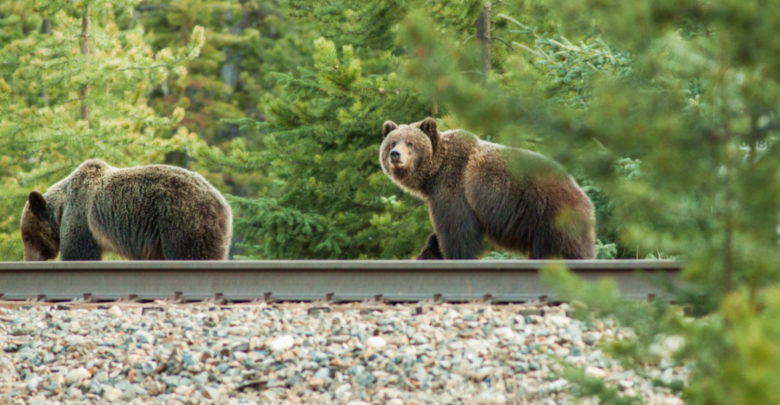 Supplied by Niels de Nijs
Supplied by Niels de NijsA University of Alberta project is helping reduce the number of animal and train collisions occurring in Banff National Park.
As many as 21 bears have been killed by oncoming train traffic moving through Banff National Park since 2000. According to Colleen Cassady St. Clair, U of A ecologist and professor in biological sciences, that is significant seeing as there are roughly 60 grizzly bear’s calling the park home.
“There are more trains, and these trains are traveling faster than ever before,” St. Clair explained. “The possibility of collisions between wildlife and trains is increasing.”
The researcher, along with interdisciplinary PhD student Jonathan Backs and John Nychka from the faculty of engineering, developed a device which helps warn grizzly bears of oncoming trains. It works by providing animals with both a flashing light and ringing bell — the exact stimuli used at railway crossings for humans — 30 seconds before a train arrives. While originally designed specifically for grizzlies, other animals are responding positively to the device as well.
The devices are installed in four key areas identified by St. Clair and her team where wildlife-train collisions occurred in the past to test their ability to warn animals. While analysis of the data is not finished, for St. Clair the devices effectiveness looks promising.
“Even if the system was adopted, it couldn’t solve the problem for every bear,” St. Clair added. “Warning systems would only be installed at high-risk locations and it would take time for resident animals to learn to associate them with approaching trains. But, our hope is that this type of solution would be most beneficial to the animals that live in that area.”
St. Clair’s approach of animal learning, as opposed to physically limiting their habitats, is new and gaining popularity.
“We might try more actively to teach animals to avoid areas of human-development and related effects that are damaging to them, while accepting that we share space with other species,” she said. “Our human activities do get in their way. I think animal learning—inviting them to participate in their own conservation—could be a much bigger part of the solution for these problems.”
Grizzly bears are provincially threatened as a species. Park officials hope research could focus on why bears use the tracks in the first place.
St. Clair’s research group determined that many factors attract bears, from spilled grain, concentrated deer and elk populations, berries that grow near the tracks, to the convenient corridor that tracks provide through the landscape. Through this research, it became obvious for her that keeping bears off the tracks altogether would be extremely difficult.
“The issue isn’t keeping wildlife away from the tracks—it is keeping animals from being struck by trains,” said St. Clair. “So we wondered, what if we shifted focus? What if we tried to teach bears to avoid the trains themselves, giving them enough time to get safely out of the way?”




